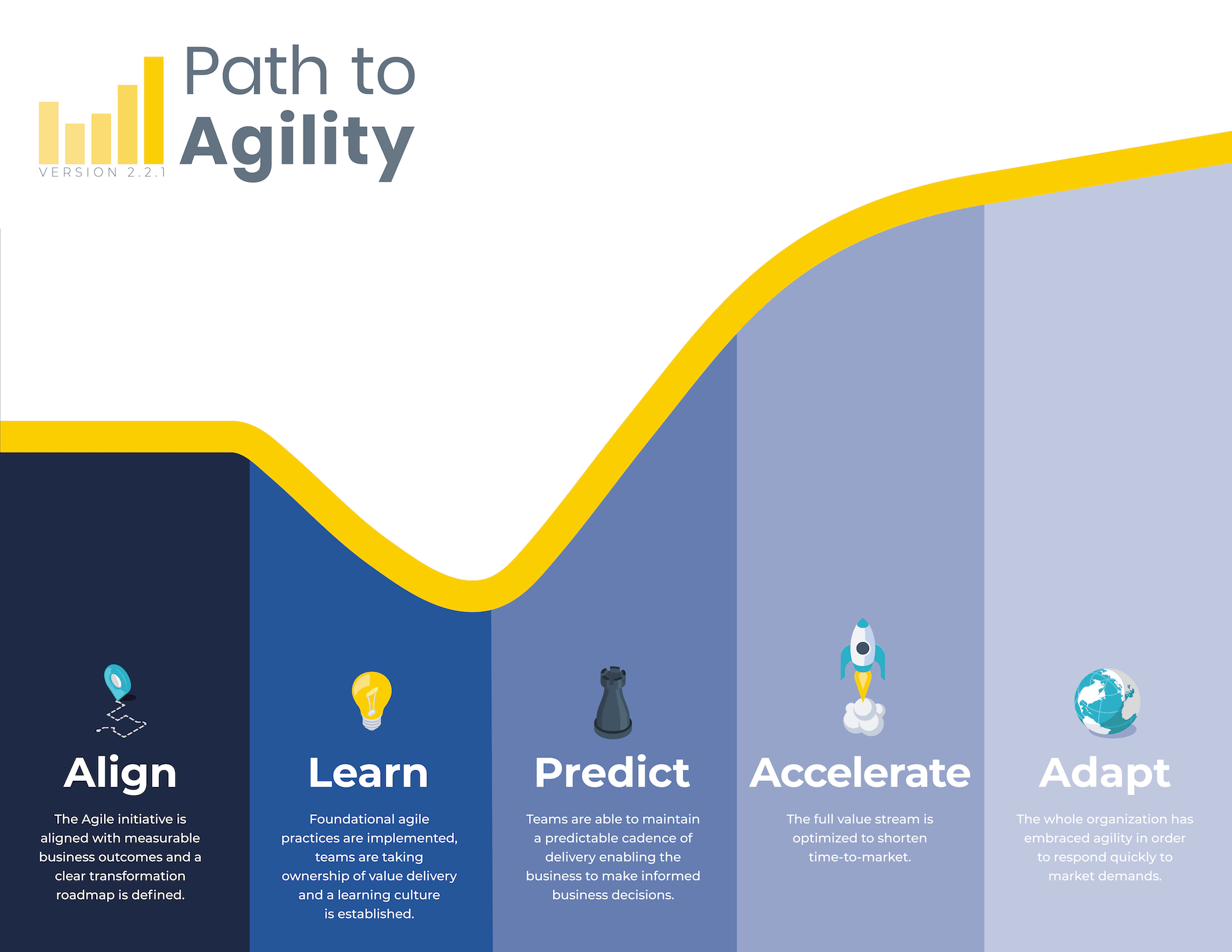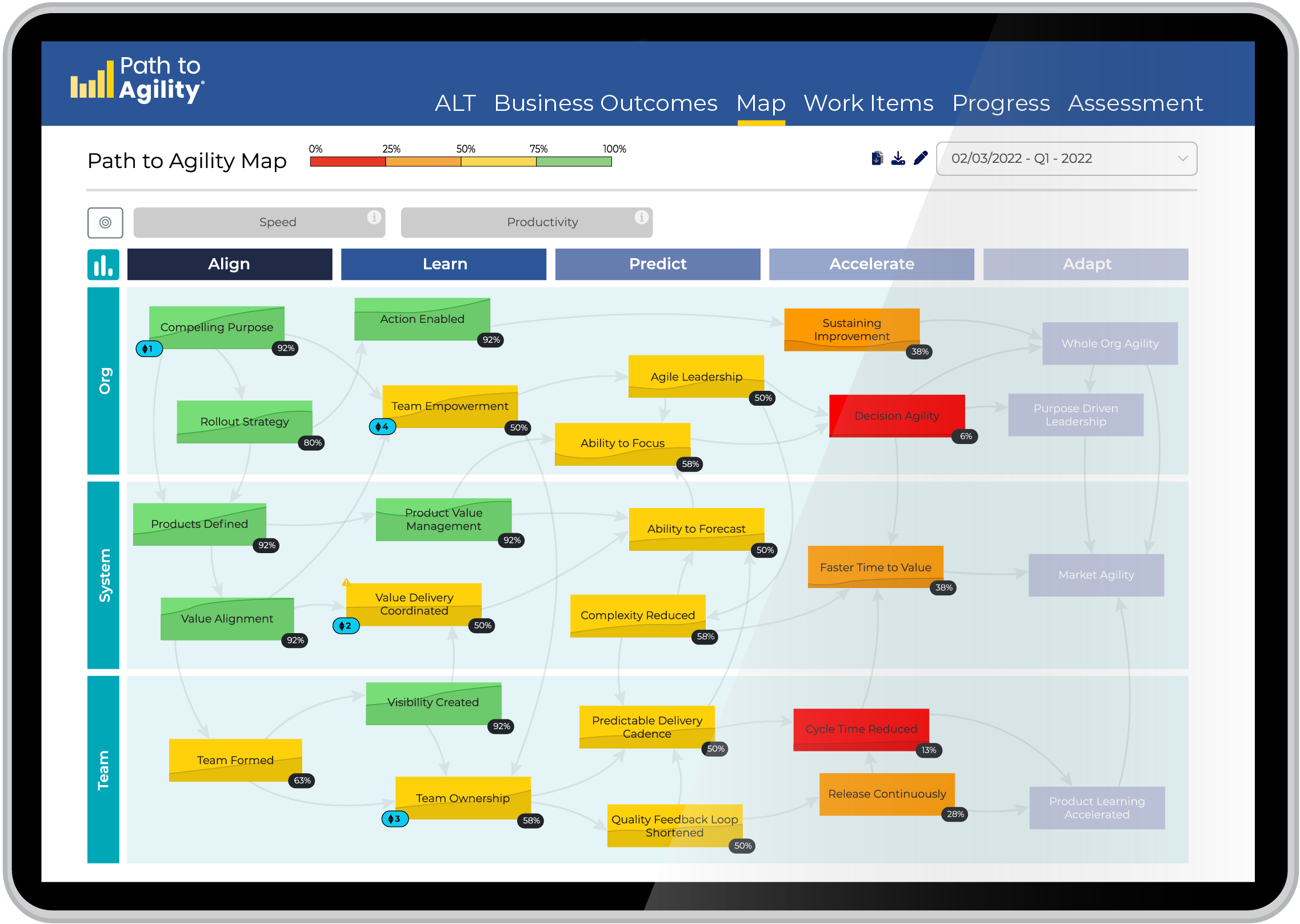
At Big Agile, we partner with tool known as Path to Agility that offers a comprehensive approach designed to guide organizations through their agile transformation efforts. Path to Agility helps us focus on lasting change for the organization as well as make visible our progress or lack thereof on agreed upon initiatives.
Change involves the entire organizations. We see most agile adoptions start with either the team or a leadership influence. Those are great catalysts, but they typically reach a ceiling. We are passionate about helping form a top down and bottom up approach to lasting agile change. It all starts with outcomes. We focus our efforts on the desired outcomes established by the executive teams.
Once we connect and explore your needs we can begin implementing various steps in the change process:
1. Assessment and Awareness:
Before diving into transformation, Path to Agility emphasizes the importance of understanding an organization's current state which involves:
- Agility Health Radar Assessments: Tools that help organizations measure their agility across multiple dimensions, such as team health, leadership, and technical practices.
- Workshops and Trainings: Sessions designed to foster awareness of agile principles and practices among employees at all levels.
2. Strategy and Alignment:
A successful agile transformation necessitates a clear vision and alignment at every organizational level so we need to focus on:
- Leadership Alignment Workshops: These are meant to ensure that leaders have a unified vision and strategy for the agile transformation.
- OKRs (Objectives and Key Results): A goal-setting framework that keeps teams aligned with the organization's strategic objectives.
3. Foundations of Agility:
This area focuses on instilling basic agile practices and mindsets:
- Agile Training: Comprehensive training sessions on Scrum, Kanban, and other agile frameworks to equip teams with the knowledge they need.
- Agile Coaching: On-the-ground support from experienced agile coaches to help teams apply their newfound knowledge in real-world scenarios.
4. Mastery and Scaling:
Once the foundational practices are in place, the focus shifts to mastering these practices and scaling them across the organization:
- Advanced Training: Delving deeper into specialized topics, such as product ownership, agile metrics, or technical excellence.
- Scaling Frameworks:Tools and methodologies, like the Scaled Agile Framework (SAFe) or Large Scale Scrum (LeSS), that facilitate the expansion of agile practices across large organizations.
5. Sustainable Agility:
The final goal is to ensure that the agile transformation is not just a one-time event but a sustainable change:
- Retrospectives and Continuous Improvement: Regular reflection sessions that allow teams to evaluate their performance and identify areas for improvement.
- Leadership Development: Continued support and training for leaders, ensuring they can guide their teams towards long-term agility.
Path to Agility allow us to offer a holistic approach and tracking system to agile transformation initiatives, addressing not only the technical aspects but also the cultural and strategic shifts necessary for true agility.

By focusing on everything from foundational training to leadership development, we can help provide a roadmap that is adaptable to organizations of all sizes and industries. As the business world continues to evolve, we must learn how to drive fast in the fog. Every organization is different (just like human beings). Rarely does a one-size-fits-all approach work at the organizational level.
Let's explore what might be best for your organization